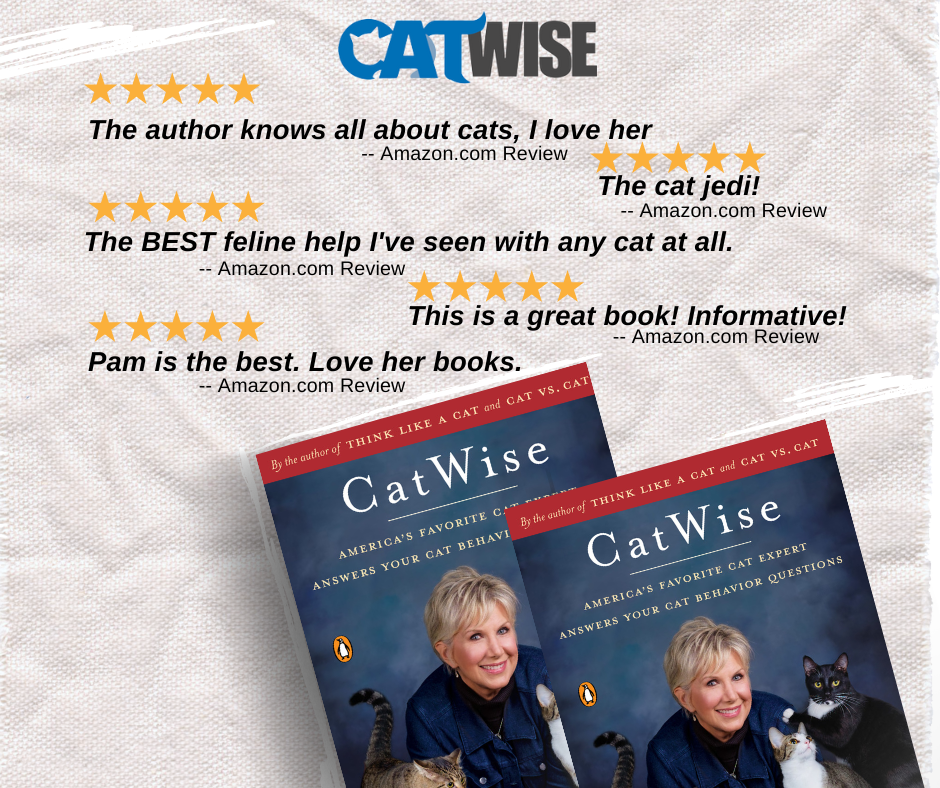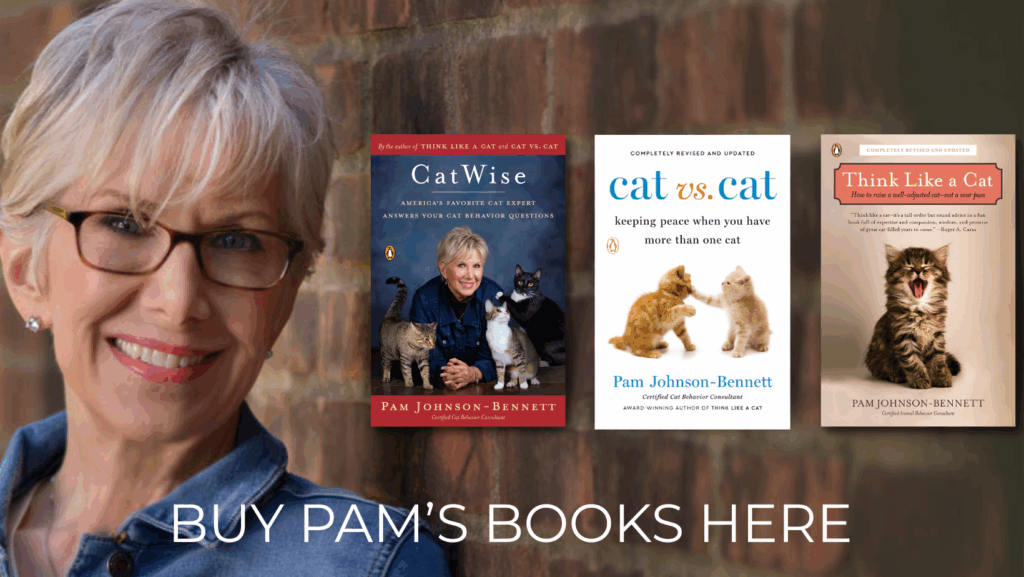
Every life process relies on water. The body of the cat is made up of about 70% water. The natural prey cats would catch also contain approximately that same amount of water. Many people are under the false assumption that cats don’t need water or that they’re afraid of it. The cat’s ancestors came from a desert environment and relied on getting adequate amounts of water in the food they ate. Modern day cats eat lots of dry food which has very low water content (about 10%) and so they need an additional water supply in the form of a separate water bowl. Cats who consume wet food get much of the water they need within that food (canned food contains approximately 78% water) but also still greatly benefit from a separate water supply. A cat eating a diet of canned and dry food also must have a separate water supply.
If you feed dry food to your cat don’t try to increase the water content by wetting the food because it often makes it much less palatable to the cat. Instead, talk to your veterinarian about adding some canned food into the diet. There are ways to gradually transition your cat to canned food.
Use the Right Type of Water Bowl
Cats need to have access to fresh water at all times. To ensure your cat is drinking enough water, use a water bowl that is an appropriate size for your cat and maintain a consistent level of water in it. Don’t use a huge bowl filled with water as a way of only having to fill it once a week because the water will get stale, dirty and contaminated. Use a bowl that will hold a day’s water. Every day, wash the bowl with soapy water, thoroughly rinse it and refill with fresh water. Don’t just refill the water bowl without washing it because the water will taste bad and can become contaminated by biofilm.
Gravity-feed water and food bowls are also very popular with pet parents. The one problem with the water container though is that the water can get stale and contaminated. If you do decide to use a gravity-feed dispenser, you still need to regularly change the water and completely clean the dispenser and reservoir.
If you aren’t sure which type of bowl is best, offer a few different shapes and sizes so your cat will have the choice.
Keep Water Separate From Food
To avoid contamination from food, don’t use a double feeder that has food on one side and water on the other. It’s too easy for food particles to drop into the water. Additionally, many cats don’t like having their food and water close together. Some cats won’t drink water if it’s too close to their food source.
Monitor Your Cat’s Water Intake
Another benefit of filling the water bowl each day is that it enables you to better monitor how much or how little water your cat is drinking. If you notice a sudden increase or decrease, it can indicate a potential health issue. For example, an increase in water consumption may be a sign of renal failure or diabetes. The sooner you’re alerted to the change in water intake, the sooner your cat will be diagnosed and receive appropriate veterinary care.
You may also notice a change in the urine output of your cat. Any change in litter box habits or the amount or frequency of your cat’s urination could indicate a potential medical problem. Consult your veterinarian if you notice a change. If your cat does get a diagnosis of something such as urinary issues, renal failure or diabetes, she’ll need to drink adequate amounts of water to help flush toxins. Since she’ll be drinking more water you may have to increase the number of water bowls or refill them more often.
No Milk
Milk is not a replacement for water. If you offer your cat milk instead of water she will become dehydrated. Many cats are also lactose intolerant after weaning so you’ll potentially end up with kitty having diarrhea which can also lead to dehydration.
Outdoor Cats
Weather can play a role in the increase or decrease in water consumption. Your cat may drink more in hot weather. With outdoor cats, make sure there is always a fresh supply of water always available and that you monitor and clean the bowl daily. In hot weather, place the bowl in the shade. In cold weather, make sure the water doesn’t freeze.
Multiple Locations
In multicat environments it’s a good idea to have more than one water source (as well as more than one feeding station). Position water bowls around the house so that one cat doesn’t have to cross another cat’s area in order to get to the water. This is especially important in homes where there is any tension between the cats.
Pet Water Fountains
If you’re concerned your cat may not be drinking enough water, try installing a pet water fountain. There are multiple types available. Some look like water fountains and some create a bubbling action. Your cat may have a preference. Since many cats like playing with the water droplets at the kitchen or bathroom faucet, offer the water fountain as a better alternative. Some fountains have flow regulators so you can adjust the water speed. Just as with a regular water bowl, make sure you keep the fountain clean. If you’re concerned about the cat making a mess with water all over the floor, you can buy placemats with raised edges that will keep any spills contained.
If you don’t mind your cat being on the counter you can also install a motion-activated faucet so the water will flow whenever she’s near it.
Other Ways to Entice Your Cat to Drink Water
Cats love to play and since so many like to play with water, try dropping an ice cube in the water bowl. Your cat may enjoy batting the cube around and in the process, begin repeatedly licking her wet paw. You can also freeze a little low-sodium chicken broth in plastic ice cube trays and then periodically drop one into the bowl. If you do this, make sure you also have an additional bowl available with just plain water so your cat will have a choice.
Water Preferences
Your cat may not care whether she drinks tap water or bottled water but if she’s not drinking enough water, provide bowls with different types of water until you discover her preference.
Need More Information?
For more information on the water and nutritional needs of cats, talk to your veterinarian for guidance on what your specific cat needs based on her age, health, activity level, and current diet.
You can also find more specific information on cat behavior and training in the best-selling books by Pam Johnson-Bennett. Pam’s books are available at bookstores and also online. We’ve included links to Amazon here on our website.
If you have a question regarding your cat’s behavior or health, please contact your veterinarian. This article is not intended as a replacement for your cat’s veterinary care. This article is for information purposes only and not offering medical advice or providing a medical diagnosis.





